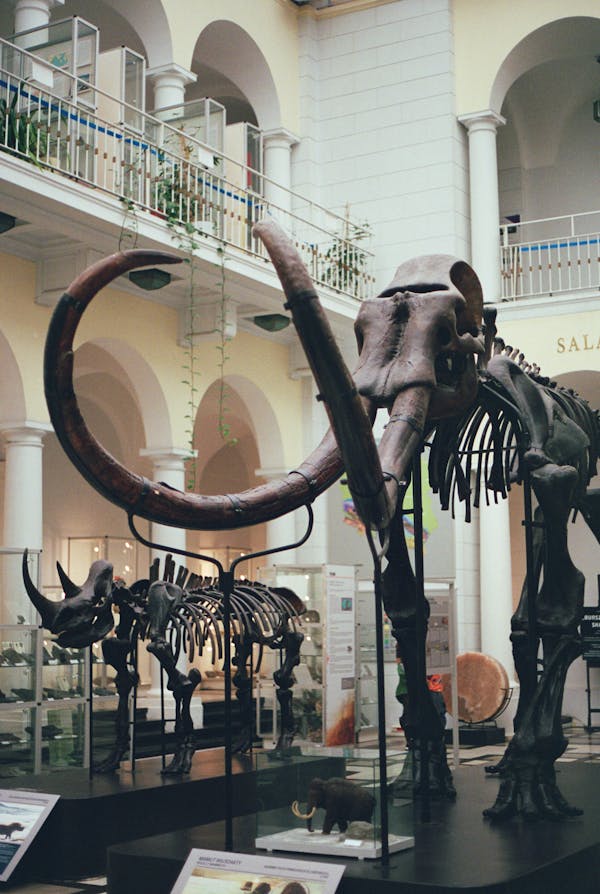As if spotting a grizzly or a wolf in Yellowstone isn’t exciting enough, a biotech company says it has the technology to bring back the woolly mammoth by 2028…and it thinks Yellowstone could be just the right place to reintroduce the long-extinct species to the earth.
The company, called Colossal Biosciences, believes it has the technology to create viable hybrid calves of mammoths and modern elephants. And it believes since the planet has thawed a bit from the time of the ice age, the pristine environment of Yellowstone National Park would be just the right place for the woolly mammoths to survive.
The company is so confident in its project, that it even set a date for its commencement.
“We believe we are currently on track for a 2028 birthing,” Ben Lamm, CEO and co-founder of Colossal, told Cowboy State Daily. “We recently were able to create an elephant iPSCs (stem cells) that is a global, world-first breakthrough and a significant step toward our woolly mammoth project. Colossal is also in the editing in the elephant cell phase of the project and leveraging the knowledge gained from the computational analysis of our now 60 mammoth genomes.”
In fact, Colossal has already assembled complete genomes for current-day Asian and African elephants. That’s important because mammoths and Asian elephants share 99.8% of the same DNA.
Colossal hopes to alter elephant stem cells to carry mammoth DNA, and then grow a hybrid of a woolly mammoth and elephant using female elephants as surrogates.
Lamm said the first mammoth hybrids will be kept “in a state-of-the-art, secure, animal-certified private nature preserve under the care of leading animal care professionals and elephant specialists.”
But he isn’t as precise about the location of his so-called “rewilding” plan. He wouldn’t tell Cowboy State Daily if the first national park is being considered as a rewilding location for the mammoths.
“We are currently exploring many environments for potential rewilding but have not yet finalized the exact locations,” he said. “This rewilding planning process will take years and has to be done thoughtfully with various partners across conservation, government and ingenious leaders.”
Besides, the idea of rewilding in Wyoming has a hitch: No woolly mammoth specimen has been found in fossil-rich Wyoming. All the mammoths discovered so far are Columbian mammoths, a closely related species that was considerably larger.
“Overall, elephants are smaller than mammoths,” said Dr. Julie Meachen, a mammalian biologist who specializes in paleoecology. “Modern elephants are probably about the size of a woolly mammoth, but a Columbian mammoth is significantly bigger than an elephant.
However, the limestone cave in the Bighorn Mountains contains the bones of many extinct North American megafauna, including American cheetahs and lions, short-faced bears, camels and mammoths. Cold conditions inside the cave keep the bones so well preserved that prehistoric DNA has been extracted and studied.
Based on Dr. Meachen’s research at Natural Trap Cave and elsewhere, she also believes that the Wyoming landscape today is essentially the same as it was during the last days of the mammoths. In theory, mammoths could quickly make themselves at home in Yellowstone.
But there’s another cost…a human cost.
“I think it would be a catastrophe,” she said. “I don’t think the ecosystem will have trouble absorbing mammoth, but it could have serious consequences for the human environment.”
Meachen has studied modern elephants in the wild and knows enough about their behavior to see dozens of mammoth-sized issues. Elephants are more than willing to use their size and strength to get what they want, and there isn’t much people can do to dissuade them.
It’s not hard to find examples of the destruction wrought by a single 5-ton male elephant, let alone a herd of multiple, multi-ton animals on the same wavelength.
Meachen can already envision the absolute havoc mammoths could cause inside and outside Yellowstone. She believes anyone living adjacent to the park would “have an absolute, catastrophic heart attack if elephants were going to be unleashed in their neighborhoods.”
“I can see giant herds of mammoths stampeding through West Yellowstone, stomping on cars and bowling through buildings,” she said. “It would be an absolute catastrophe. You have to remember that an elephant’s home territory is probably bigger than the park, and they probably wouldn’t give a damn if the boundaries were not sufficient for their roaming needs.”










